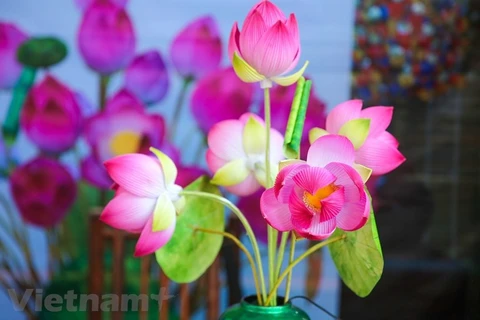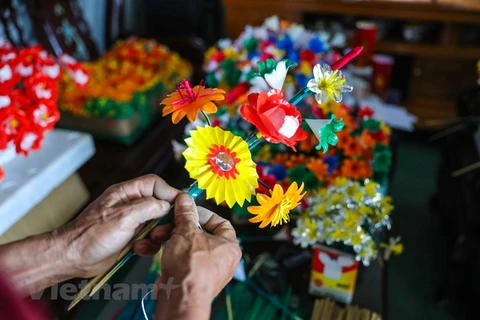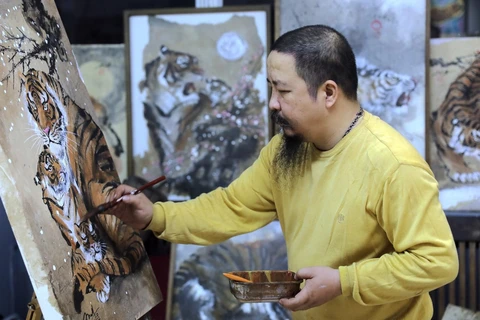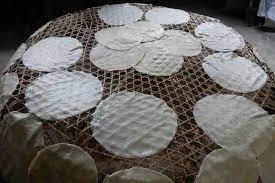 Two students from the HCM City University of Technology (HUTECH) show their paper sheets made from elephant dung at the Sai Gon Zoo and Botanical Garden in HCM City. (Photo: tuoitrenews.vn)
Two students from the HCM City University of Technology (HUTECH) show their paper sheets made from elephant dung at the Sai Gon Zoo and Botanical Garden in HCM City. (Photo: tuoitrenews.vn) HCM City (VNS/VNA) — The Sai Gon Zoo and Botanical Garden’s staff and a group of students at the Ho Chi Minh City University of Technology (HUTECH) are making eco-friendly paper from elephant dung every weekend.
Mai Khac Trung Truc, director of the zoo, said transforming elephant dung into paper has been done in many countries, but it is a new idea in Vietnam.
In the past, the dung was discarded or used as manure. Now, it gets recycled into paper.
Five adult elephants at the zoo have not only served visitors but also helped produce eco-friendly paper.
“The elephants eat mostly grass, sugar cane and vegetables, so their dung is not too smelly, has a lot of fiber and can be used to make paper,” he said.
The zoo has been recycling elephant dung since February, and the first elephant dung paper was produced in April.
“The recycling will help raise awareness about wildlife protection and teach children to save natural resources and protect the environment,” he said.
The process of paper-making is done manually without any industrial chemicals.
The zoo’s employees collect around 800kg of dung from the elephants every day in their enclosure, but only five kilos are being used to make paper every weekend.
The collected dung is washed at least seven times to remove impurities, leaving only the fiber left for recycling. The fiber is boiled at 200 degrees Celsius for two hours to kill bacteria and remove odor.
"This is still experimental and no machinery is used, so we only make several dozen paper sheets at a time," Truc said.
The boiled fibres are then dried under the sun. The dried fibres are pureed into powder, and then mixed with water, tapioca starch and some paper pulp.
The mixture is finally poured into A3 and A4 paper-size molds and dried for another eight hours to get the final product.
Located on Nguyen Binh Khiem Street in District 1, the Sai Gon Zoo is one of the world's oldest zoos and the country's largest zoo and botanical garden.
It is home to thousands of plant and animal species, both endemic and foreign./.























